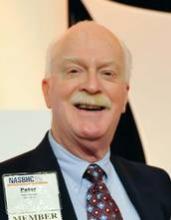Most people don’t think of schools as a place to provide health care, but children and adolescents increasingly are getting everything from immunizations to mental health services at school-based health centers (SBHC). The Affordable Care Act includes $200 million to fund major capital needs and expand services at SBHCs; more than half has been awarded so far.
There are more than 1,900 SBHCs around the country, according to the National Assembly on School-Based Health Care. Although the models vary, SBHCs are typically a partnership between the school and a community health organization. Most centers provide a combination of primary care, mental health care, chronic disease management, substance abuse counseling, dental health, nutrition, and general health education.
Dr. Peter D. Wallace, a pediatrician and a director at the National Assembly on School-Based Health Care, explains why these centers are important.
Question: Why does the school-based health center model need to be expanded?
Dr. Wallace: We need to expand it because there is a core of students who, regardless of everything we try to do, just don’t receive adequate health care. For some, it is being uninsured. For some, it’s a perceived lack of access. For some, it’s discomfort with the medical system in their community. We know that students learn better when they are healthy. We’ve demonstrated that, when we have school-based clinics, there’s less absenteeism. Parents are much more comfortable coming to a school that they are familiar with, that they know, rather than venturing out into what sometimes is a very foreign environment to them, especially if they don’t speak English very well.
Question: How do these centers support the work of physicians in the community?
Dr. Wallace: Most of these children don’t have the financial resources to access health care adequately. In most communities, that lack of access to care is absorbed by local physicians or, in some cases, an academic center. What we’re doing is spreading this out a little bit. We’re not competing with private practice physicians. If there’s a burden to care for a lot of uninsured or underinsured children, then SBHCs serve to take some of the pressure off of the private sector. In communities without SBHCs, hospitals and emergency departments tend to be the access point for these families. That’s very expensive and the hospital ends up having to take on that cost. With SBHCs, these kids don’t have to go to the emergency department. They can be seen free in a school-based clinic.
Question: How do SBHCs fit in with the patient-centered medical home model?
Dr. Wallace: Many of these centers are trying very hard to become a medical home. The medical home concept is one of collaboration and we can coordinate very well because we already a relationship between the children, parents, teachers, and counselors. And because of the support that already exists in the school system, it’s much easier, I think, for this type of clinic to do that.
Question: Aside from the $200 million in the ACA, how are these health centers supported?
Dr. Wallace: Funding comes from a wide variety of sources. A number of states are very involved in financing these centers. Of course, that’s been under a lot of pressure over the last 5 years or so. Many centers are supported and run by academic medical centers, major hospitals, or children’s hospitals. School districts also run SBHCs. Where I live in Iowa, one center is run by the county public health department. The center in my area is 100% community supported. We have no outside funding. So there’s a huge variety of financial wells that are being tapped.
Question: How did SBHCs come about?
Dr. Wallace: It goes back to the 1960s. The centers spontaneously grew in lot of different places based on need. A lot of states really support this concept. Even those that don’t have become aware that this is an economical, effective, personal, and complete way to treat school-aged children who might otherwise be left out of the health care system. States with SBHCs can spend less on Medicaid for children who are no longer going to the emergency department for their health care. That makes sense. I think that’s why a lot of states have rallied to provide financial support. They realize that the dollars they put in for school-based health centers are less than what they might otherwise spend.
Dr. Wallace is a retired pediatrician and hospital administrator who serves on the board of directors of the National Assembly on School-Based Health Care. He continues to help raise money for the school-based health center in his Iowa City community.


